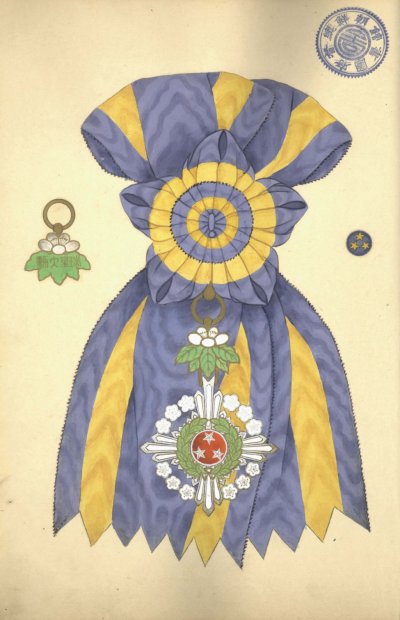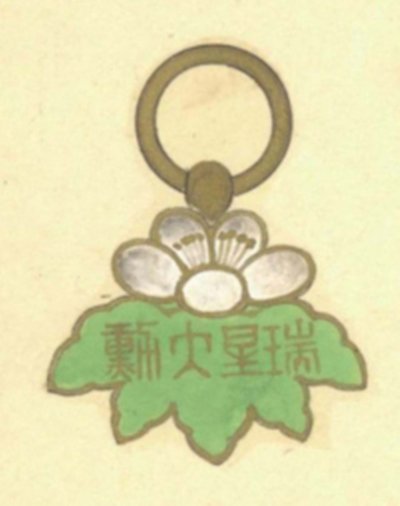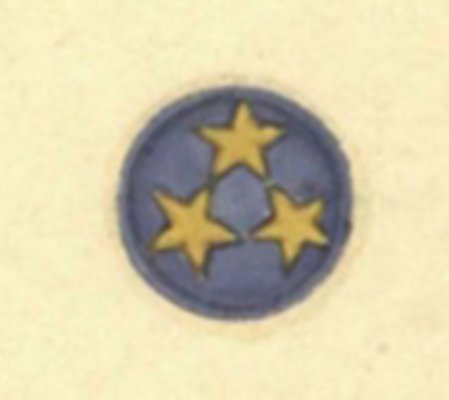Order No. 2 in the hierarchy of the Korean Empire decorations.

Original title
대훈위서성대수장
in japanese
大勳位瑞星大綬章
The Korean equivalent of the Japanese Order of the Chrysanthemum on a large ribbon.
It was intended to award "outstanding services" to members of the imperial family and the highest military and civilian ranks of the empire. To receive the order, it was necessary to be a holder of the first class of the Order of the Plum Blossom.
Established on April 17, 1900 by Imperial Decree No. 13 (another decree was issued on August 12, 1902).

Original title
대훈위서성대수장
in japanese
大勳位瑞星大綬章
The Korean equivalent of the Japanese Order of the Chrysanthemum on a large ribbon.
It was intended to award "outstanding services" to members of the imperial family and the highest military and civilian ranks of the empire. To receive the order, it was necessary to be a holder of the first class of the Order of the Plum Blossom.
Established on April 17, 1900 by Imperial Decree No. 13 (another decree was issued on August 12, 1902).







